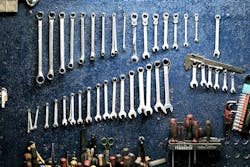Helping Customers Create Maintenance Budgets
Modern day car reliability, coupled with longer intervals between required maintenance, has created a situation of inattentiveness to services needed and a wary attentiveness when presented with the costs to perform those services. Even though it’s called “regular maintenance,” it lacks being done routinely enough to be top-of-mind and front-and-center with the customer.
When you look at it from a slightly different perspective, it’s not too dissimilar from visiting the dentist. You know you have to do it, but do you really budget for it? What happens if there is something taking place that needs to be fixed and is going to cost you $400? Many folks don’t want to commit money to such things, mostly because they haven’t budgeted for it.
That reminds me of a short story I read:
The Marshes were shown into a dentist’s office. Mr. Marsh made it absolutely clear that he is in a big hurry and is not to be upsold.
“No expensive extras, Doc. No gas, needles or any of that fancy stuff. Just pull the tooth and get it over with.”
“Mr. Marsh,” said the dentist admiringly, “I wish more of my patients were as strong minded and brave as you. OK, show me, which tooth is it?”
Mr. Marsh then turned to his wife and said, “Show him your tooth, honey.”
The lack of frequency in seeing customers on a regular basis allows the subject of maintenance to be buried under other day-to-day activities. For the customer, it remains an unbudgeted cost event. The lack of awareness of the price tag can be off-putting to some, depending on the services needed. It can also be an undue source of friction between you and your customers. The remedy is fairly simple — it requires a plan, some time to get it underway and a new perspective with your customers.
The issue revolves around helping the customer understand what needs to get done, when it needs to be done, and how much they need to budget. Getting over this hurdle will build loyalty in customers because it shows you care about educating them in the fine art of automotive maintenance and genuinely care about where they put their money.
To do this, I offer the copyrighted individual maintenance schedule (IMS) for you to consider using with customers. There are reasons for doing it this way. For starters, people like to review things. Having a detailed chart that outlines budgetary items, along with a timeline for services, provides something tangible that you can physically look at and discuss with your customers.
Second, helping customers be cognizant of costs over time reduces the shock factor they get when you pop the price of a service on them without any foreshadowing. Over time, you’ll begin to arrest that look of surprise when discussing prices of services through intelligent conversation and planning. So let’s discuss the structure of the IMS.
Printing this two per page and double- sided provides you four full years of data that can be recorded and budgeted. Filling in the mileage across the top reminds your customer of the exact mileage on the odometer when they should return.
If you want to use this chart with Service Champ’s permission, simply let me know and I can help you with any questions. Remember, as a basic template you may want to adjust it in accordance with your business practices and any other information you want to keep track of.
